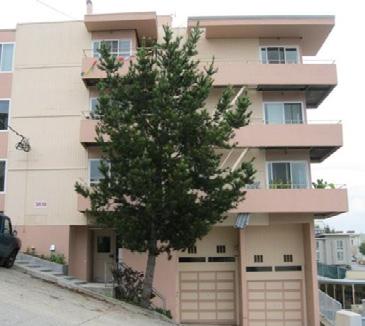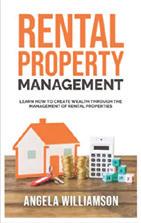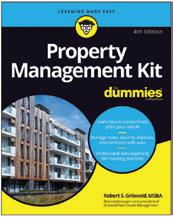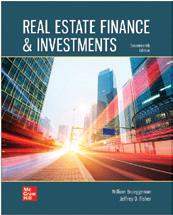
EAST BAY RENTAL HOUSING ASSOCIATION | JANUARY/FEBRUARY 2023 | $9.95 Housing rental SERVING ALAMEDA AND CONTRA COSTA COUNTIES Trends 2023 WHAT TO EXPECT IN THE MARKETPLACE Tips for managing RISING INSURANCE COSTS Rental Market: PERIL OR PROMISE?
Ready to make work a breeze? Get a personalized demo today.


yardibreeze.com | (800) 866-1144
An intuitive and powerful way to manage your properties from anywhere





The choice for premier Structural and Civil Engineering services in the Greater Bay Area. We specialize in Seismic Retrofit! E S I EARTHQUAKE AND STRUCTURES, INC. Structural and Civil Engineering + Construction Management 6355 Telegraph Avenue, Suite #101, Oakland, CA 94609 Est. 1984 | Structural Lic. No. S3093 • Soft-story screening and reports per City seismic retrofit ordinances • Cost-effective design for Seismic strengthening, foundations and retaining walls • Construction management, oversight, and inspections • More than 45 years of industry experience • Knowledgeable, reliable, and insured • More than 6,000 City approved construction projects Bishwendu K. Paul, S.E., M. Eng. UC Berkeley Alumni 510-928-1065 bk@EsiEngineers.com www.EsiEngineers.com

2 JANUARY+FEBRUARY 2023 / EBRHA.COM JANUARY/FEBRUARY 2023 Features 30 PROPERTY MANAGERS SHARE TRENDS FOR 2023 Property management experts discuss trends 34 NAVIGATING NEW HORIZONS IN THE PROPERTY MARKETPLACE Current marketplace changes and strategies to manage it all
LEFT:
Contents
COVER: RICH HAYUNSPLASH
HOWIE MAPSON/UNSPLASH
EAST BAY
RENTAL HOUSING ASSOCIATION

Volume XXXI Number 24 | Jan/Feb 2023
EBRHA OFFICE
3664 Grand Ave., Suite B, Oakland, CA 94610
TEL 510.893.9873 | FAX 510.893.2906 ebrha.com
CHIEF EXECUTIVE OFFICER Derek Barnes aemail@ebrha.com | 510.893.9873 ext. 407
COMMUNICATIONS AND MEDIA RELATIONS Chris Tipton communications@ebrha.com | 510.893.9873 ext. 404

ADVERTISING AND MEMBERSHIP SALES Danielle Baxter sales@ebrha.com | 510.893.9873 ext. 403
MEMBER SERVICES AND SUPPORT membership@ebrha.com | 510.893.9873 ext. 414
FACILITIES AND EVENT SCHEDULING Shani Brown shani@ebrha.com | 510.893.9873 ext. 406
BILLING AND ACCOUNTING Chris Welton accounting@ebrha.com | 510.893.9873 ext. 405

EBRHA OFFICERS
PRESIDENT Wayne C. Rowland
FIRST VICE PRESIDENT Luke Blacklidge
TREASURER Chris Moore
EBRHA BOARD OF DIRECTORS Wayne C. Rowland, Luke Blacklidge, Maya Clark, Chris Cohn, Lazandra Dial, Carmen Madden, Chris Moore, Courtney Morse, Fred Morse, Deeana Owens Joshua Polston, Jack Schwartz, Aaron Young
PUBLISHED BY East Bay Rental Housing Association
PUBLISHER Derek Barnes
EDITOR Michelle Gamble
ART DIRECTOR Bree Montanarello
Rental Housing (ISSN 1930-2002-Periodicals Postage Paid at Oakland, California. POSTMASTER: Send address changes to RENTAL HOUSING, 3664 Grand Ave., Suite B, Oakland, CA 94610
Rental Housing is published bimonthly for $9.95 per issue by the East Bay Rental Housing Association (EBRHA), 3664 Grand Ave., Suite B, Oakland, CA 94610.
Rental Housing is not responsible for the return or loss of submissions or artwork. The magazine does not consider unsolicited articles. The opinions expressed in any signed article in Rental Housing are those of the author and do not necessarily reflect the viewpoint of EBRHA or Rental Housing. This publication is designed to provide accurate and authoritative information in regard to the subject matter covered. It is sold with the understanding that the publisher is not engaged in rendering legal, accounting or other professional services. If legal service or other expert assistance is required, the services of a competent person should be sought. Acceptance of an advertisement by this magazine does not necessarily constitute any endorsement or recommendation by EBRHA, express or implied, of the advertiser or any goods or services offered. Published bimonthly, Rental Housing is distributed to the entire membership of EBRHA. The contents of this magazine may not be reproduced without permission. Publisher disclaims any liability for published articles. Printed by Bay Central Printing Company. ©2023 by EBRHA. All rights reserved.

JANUARY+FEBRUARY 2023 / EBRHA.COM 3
STAY CONNECTED WITH EBRHA Call: 510.893.9873 Membership Questions: membership@ebrha.com Visit: ebrha.com Share Your Feedback: editor@ebrha.com Advertise: sales@ebrha.com Read: issuu.com/rentalhousing Learn: ebrha.com/faq Ask: ebrha.com/submit-your-questions Participate: web.ebrha.com/events GET SOCIAL @ebrha_rentrospect facebook.com/EastBayRentalHousingAssociation @EastBayRHA

4 JANUARY+FEBRUARY 2023 / EBRHA.COM Contents JANUARY/FEBRUARY 2023 Departments 6 WELCOME Letter from the CEO, Derek Barnes 8 CALENDAR EBRHA events and other happenings 9 OUT & ABOUT A look at our community events 10 LEGISLATION Legislative Review 12 ADVOCATE Challenging the eviction tsunami 14 EDUCATE Experts recommend the best books for property owners Tips to manage rising insurance costs 18 INFORM What property owners should know for 2023 20 CONNECT Build-to-rent — a new housing construction trend 22 INSPIRE What's new in ancillary outcome ROI for short-term rentals Why stylish interior designs increase ROI for short-term rentals 38 SUPPLIER DIRECTORY 42 LAST LOOK Renting by choice 43 AD INDEX RICH HAY/UNSPLASH
THE BEST RENTERS
Come through
Rental Marketing
Find more renters, fast. Advertise to over 70 partnered listing sites with a single-click.
Digital Application

Custom and secure. Potential renters can submit an application anytime, anywhere.


Credit and Background Checks
Instant. Comprehensive credit reports plus nationwide background checks by Transunion.
Automated Verifications
Increase efficiency. Signed authorization forms automatically sent to verifiers.
Visit ebrha.com, Member Portal > Intellirent BETA to access your free member resources.

No additional fees. No site visit. No contract. 100% free for members.

PROPERTY ADS | QUALIFIED RENTERS | SUSTAINABILITY | MAXIMUM REVENUE Learn more about EBRHA
Welcome
A LETTER FROM EBRHA CEO DEREK BARNES

he beginning of another new year is here, and 2022 is in our rearview mirror. A key question is on the minds of many rental property owners and managers entering 2023. Will owning and managing rental property in the Bay Area continue to be a perilous adventure, or does it continue to offer the exciting promise of both financial freedom and being of service to the community?
In late fall, I had an opportunity to be on a panel at UC Berkeley to discuss housing policy. It was clear that pro-tenant activist and tenant’s rights attorney, Leah Simon-Weisberg firmly believes that small rental property owners cause many of the housing problems and poor housing conditions in the East Bay. Ms. Simon-Weisberg indicated that creating more housing and stimulating new development was not necessary to solve the area’s housing crisis. She also condemned big outside investment companies that are well-resourced, entering our local markets, buying up properties, and wreaking havoc in their own way. Which is it? Are small or larger owners/operators at the center of this crisis, creating the impending tsunami of evictions and causing all the homelessness we see on our streets?
There’s one constant when analyzing our current housing crisis — policy-making. There have been lots of unvetted and reactionary housing policies that municipalities have adopted over the years, and our housing and the homeless problem has only gotten worse. With impact evidence staring them in the face (cause and effect), legislators continue to crank out more damaging policies that are actually anti-housing, hinder housing providers, and hurt renters in the long run. With little to no impact or regression analysis, our policymakers and elected officials aren’t held accountable for their poor and misguided decisions that may take decades to reveal long-term housing outcomes.
There’s a steady drum beat of “landlords” are the problem.
TTenant groups are quick to bang that over the heads of legislators and elected officials who quite often know little about housing and what it takes to operate a rental business. They desperately look for someone to blame for a crisis of their creation and continue to pile on more draconian restrictions and housing enforcement. When you’re hemorrhaging blood, you don’t hobble your doctor.
A new effort is underway to blame small, local housing providers for the increased homelessness and poor housing conditions exacerbated by a global pandemic. The response to the pandemic was to enact a three-year eviction moratorium where many owners weren’t being paid rent and are still holding tens of thousands of dollars in rental debt – on top of rent increase caps of 3% in cities like Oakland. Tenant rights groups know it’s a very effective plan to target smaller owner (typically Black, Brown, immigrant communities, and the elderly) properties for acquisition and force them to sell at a below-market price. As I’ve said before, it’s a newer form of blockbusting (2.0). This time, there’s no imaginary or engineered panic that drives an exodus of property owners and deflates property value. These policies cancel rent payments, increase renter protections, and cap rent increases needed to offset higher operating costs. All these things distort the market — generating owner distress and defaults all on their own.
In a December 6 meeting, the Alameda County Board of Supervisors had several key housing policies on their agenda — Fair Chance, Just Cause, and a Rental Registry. Despite the moments of theater, Supervisor Haubert made a really great point after the staff’s presentation, outlining areas in each of the ordinances where there were perceived problems that renters and property owners surfaced in past stakeholder meetings. The HCD Director described these differences as unreconcilable impasses. Supervisor Haubert asked, “Why is there such an impasse?” Why do the sides take the positions that they do? Who benefits from the division? Context is everything, and if policymakers don’t really understand the issues or can’t empathize, resolving differences and developing good policy can’t happen.
The Fair Chance Ordinance was of great interest to many meeting attendees, despite cramming two other complex housing policies into the agenda – Just Cause and Rental Registry. Speakers at the supervisor meeting brought
6 JANUARY+FEBRUARY 2023 / EBRHA.COM
Derek Barnes
unique real-world perspectives to the Fair Chance conversation. Here are some of the key points I heard at the meeting:
· Property owners/managers keep communities safe, and applicant screening tools and background checks help do that.
· Ultimately, rental owners/managers are responsible for ensuring safe and habitable environments and are accountable for minimizing risks for all our renters. It’s tough providing both housing and social sservices — which is what many housing providers do that is grossly undervalued.
· While many owners/managers believe in giving previous offenders a second chance, all offenses are NOT equal. Sex offenses, crimes against children, and murder are in a different category than drug-related crimes and petty theft. Sentencing for similar offenses can be wildly different, especially across racial lines. Allowing housing providers to use screening techniques and tools is critical in maintaining safe shelter for all our renters. Associations like EBRHA provide education for our members, so they don’t engage in discriminatory practices.
· Governments should reform their public and subsidized housing programs first to support Fair Chance. Current exemptions put households that want to help family members (formerly incarcerated with criminal records) in extremely difficult situations. The decision to help someone successfully transition back into society can potentially jeopardize their access to financial aid and other vital resources.
· Municipalities should devote more resources to transitional housing programs for people who have been incarcerated for more extended periods and more serious past offenses.
The role of small local property owners in keeping rental communities safe is clear. As revealed in a Just Cities Institute survey, small property owners (usually people of color and immigrants) support a balanced approach to Fair Chance Housing. Small owners/operators uniquely understand the challenges of the formerly incarcerated and will make accommodations and exceptions when no one else will do that. Owners, especially owner-occupants of rental
units, are responsible for providing safe environments for residents. They must have the screening tools and access to different background checks to ensure they provide safe housing for everyone in the community.
With newly installed elected officials, we’ll undoubtedly see more policies and legislation aimed at solving the “housing crisis.” At face value, these pieces of legislation appear to favor advancing a pro-housing agenda. However, without prior vetting and proper impact analysis, more unintended consequences may continue to harm owners and damage the housing industry.
Even under the current circumstances, there’s great promise in the East Bay rental housing market as renter demand remains high. More than 30% of EBRHA members indicated they are interested in increasing their portfolios. However, we know many owners have elected to exit the rental housing business in the Bay Area or exit the rental business completely.
If you’re thinking about selling because of the unpredictable or hostile legislative environment, keep in mind that this might be the time to hold or even add to your investment portfolio if you can – provided the economics work for you and you can weather the current cycle of anti-housing mandates and policies aimed at property owners. Higher interest rates, greater defaults, more inventory, and slower buyer demand will generate lower even more competitive pricing. Savvy buyers in the market, with cash, can look forward to some significant discounting on multiunit properties that are for sale in the East Bay.
So, whether you’re considering selling rental property, holding steady, or growing your portfolio, EBRHA is here to be your trusted partner as an essential resource in the rental housing community. You’ll find practical ideas and useful information, within the pages of this issue of Rental Housing, to help you remain competitive in our challenging market.
Finally, we thank you for your continued support of the association and our work to support the community of housing providers. On behalf of EBRHA’s Board of Directors and staff, we wish all our members a safe and prosperous year.
JANUARY+FEBRUARY 2023 / EBRHA.COM 7
* JANUARY 2
New Year’s Day, EBRHA office closed
JANUARY 10
2:00PM-3:30PM
The Roundtable
Presented by EBRHA Board
President Wayne Rowland
JANUARY 12
3:00 PM-4:30PM
Resident Screening Presented by Intellirent
* JANUARY 16
Martin Luther King Jr. Birthday JANUARY 17
3:00 PM-4:30PM
Monthly Member Updates and Q&A
Featuring Attorney Bianca Torres, Legal Access Alameda
JANUARY 19
2:00 PM-3:30PM
Subsidies for Owners and Rental Property Providers Presented by Abode Services
JANUARY 24
3:00 PM-4:30PM
Updated Forms Review Presented by Ron Kingston
JANUARY 26 5:30PM
In-Person
Networking Mixer: Home Depot and Behr Exclusive Pro Xtra EBRHA Office
FEBRUARY TBD
Celebrating Black History Month: Closing the Racial Wealth Gap in Housing
FEBRUARY 14
2:00 PM-3:30PM
The Roundtable
Presented by EBRHA Board
President Wayne Rowland
* FEBRUARY 14
Valentine’s Day

FEBRUARY 16
3:00 PM-4:30PM Legislative Updates for 2023 Presented by Ron Kingston
* FEBRUARY 20 Presidents’ Day
FEBRUARY 21
3:00 PM-4:30PM
Member Updates and Q&A
Featuring Odette Pollar, Plant Exchange
FEBRUARY 23
2:00 PM-3:30PM The Forum Presented by Dan Lieberman
FEBRUARY 28
3:00 PM-4:30PM Market Analysis and Insurance Updates for 2023
* NON-EBRHA EVENTS
If you would like to submit an event, please send an email to editor@ebrha.com .
8 JANUARY+FEBRUARY 2023 / EBRHA.COM 01
PIXEL-SHOT /ADOBE STOCK
02
FIND THE LATEST EBRHA EVENTS & REGISTER AT WEB.EBRHA.COM/EVENTS Calendar
Out & About
A LOOK AT OUR COMMUNITY EVENTS










JANUARY+FEBRUARY 2023 / EBRHA.COM 9
“BPOA Executive Director, Krista Gulbransen with Derek Barnes — BPOA Holiday Party, December.
EBRHA CEO, Derek Barnes with the Owens Real Estate team — Bridge Installation Gala, December.
EBRHA CEO, Derek Barnes with Deleign Thompson
Derek Barnes and new Board Member, Deeane Owens
EBRHA Staff at the Holiday Party: Chris Tipton, Danielle Baxter, Damon Rothgeb, Derek Barnes, Shani Brown
Steven Wilkinson, Derek Barnes, & Karen Motlow
EBRHA members networking at the November mixer
Derek Barnes with Grant Prize Winner & EBRHA Member: Kevin Miller
Board Member Luke Blacklidge & Member Alex Flagg
EBRHA members networking at the November mixer
Legislation
THE REAL COST OF CLEAN ENERGY, PART 1
By Ron Kingston
This Two-Part Series will be focusing on the Legislature’s efforts, costs, and the reality of “electrifying” California’s transportation system with a special focus on the impact and potential impact upon the multi-family housing industry.
Last year a bill was introduced to create building standards regarding the installation of EV charging stations for existing buildings. One of these standards will require the installation of EV charging stations with low power level two or higher in existing multi-family housing during specified retrofits, additions, and alterations to existing parking facilities for which a permit application is submitted. The California Building Standards Commission, along with the Department of Housing and Community Development have been charged with the task of creating the standards, which are to commence with the, “next triennial edition of the California Building Standards Code.” For reference, the last Triennial Edition was published on July 1, 2022, therefore, the “next triennial edition of the California Building Standards Code” will be published sometime around July 2025, and likely take effect January 1, 2026.

While the notion of clean energy is appealing to many Californians, our state’s leaders, perhaps, are not considering the financial waste and time needed to realistically change Californians’ reliance on dirty energy to clean energy. As a residential rental property owner, imagine being financially responsible for all costs associated with installing and maintaining EV charging stations for renters that do not use the
equipment because they do not own or operate an electric vehicle?
According to J.D. Power, the average cost to install a Level 2 charging station in the United States is $1,300, including installation, but not including upgrade to the electricity panels, underground work, installing or upgrading the entire electrical delivery to each development. The requirement for residential rental property owners to install EV charging stations could be the most expensive building retrofit they’ve ever faced, and quite possibly the most wasteful.
As change would have it, advances in EV charging technology are already surpassing the current normal expectations. On average, one Level 2 charge will draw about 13.5 kilowatts of electricity per day and can take up to eight hours to fully charge. Current law requires a Level 2 charging station be installed, which requires a 240-volt electrical source – equivalent to an oven range or clothes dryer; however, Level 3 charging stations are also on the market, which require a 480-volt electrical source and draw up to 350 kilowatts of electricity per day and are advertised as having the capability to charge vehicles in minutes as opposed to hours. This begs the question as to whether California has the capacity to electrify transportation as quickly as our leaders believe it can. If so, the next question is how much money is the State willing to spend in order to meet its unattainable goal of maintaining zero-emission passenger vehicles in California by 2035.
Part II will appear in the March/April edition of Rental Housing Magazine.
10 JANUARY+FEBRUARY 2023 / EBRHA.COM
ARTŪRS LAUCIS PHOTO/ADOBE STOCK

EBRHA members can earn a 2% annual rebate on all in-store and homedepot.com purchases. Sign up for your free Home Depot Pro Xtra account and use program code HDNAA-EBAA to start earning today. Plus, save up to 20% OFF BEHR® Paints, Stains and Primers. Contact a BEHR PRO® Account Manager at behrpro.com/rep for details or sign up at homedepot.com/ProXtra. *For in-store and homedepot.com purchases. Annual purchases mus t total a minimum of $25,000 to qualify for the rebate. See homedepot.com/c/ProXtra_TermsandConditions for Pro Xtra pro gram details.
BRHA ME
BERS EARN 2% CASH
ACK ON EVER
PURCHASE*
E
M
B
Y
IS THE “EVICTION TSUNAMI” COMING?

The Alameda County Community Development Agency released a memo to the County Board of Supervisors discussing the Alameda County Eviction Moratorium. The memo outlined the economic impact of the eviction moratorium on both property owners and renters. The agency provided analysis and figures, citing evictions already on the rise throughout the Bay Area. This data caused concern that an “eviction tsunami” is building – one which will significantly increase homelessness.
By Michelle Gamble
The memo states: “County-level data for the Bay Area shows eviction rates more than doubled from when the remaining state eviction protections expired in April 2022 through July 2022. Alameda County is the sole exception to this pattern, though rates here have trended marginally upward. There were 86 eviction filings in Alameda County in July 2022, slightly more than half the total of Santa Clara.”
Eighty-six eviction filings doesn’t make a “tsunami” or even create a wave of homelessness. When the eviction
moratorium lifts in Alameda County, officials are afraid evictions will catch up with neighboring counties. However, will the eviction rates really be much higher than in the past (pre-pandemic)? It’s an important question given that eviction moratoriums were put in place in 2020, and there were no eviction removals due to non-payment of rent for three years in Alameda County.
It’s natural that eviction rates would rise after lifting a three-year moratorium; but put into historical perspective, the eviction rates are returning to
12 JANUARY+FEBRUARY 2023 / EBRHA.COM
Advocate
/
KEVIN CARDEN
ADOBE STOCK
As concern rises over an eviction “tsunami” flooding the streets with homelessness, another crisis brews among property owners who are losing hundreds of thousands of dollars in unpaid rents.
“normal” levels. Consider what an article on renter evictions that appeared in The Real Deal – San Francisco Real Estate News revealed: “Eviction cases rose sharply across Santa Clara, San Mateo, San Francisco and Contra Costa counties. The exception was Alameda County, where local renter protections remain in place. Despite lower cases, it had more than 1,000 eviction court filings in June and July. The rising number of court-led evictions still don’t come close to the number of renters actually evicted across the Bay Area before the pandemic, when 11,055 filings were recorded from June 2018 through July 2019.”
Let’s take this a step further. To create a true tsunami of evictions requires every renter who is in violation of their lease agreement (Just Cause) will actually be evicted and removed. Will the vast majority be evicted? No. Renters already have other legal protections. Current eviction laws protect at-risk and low-income renters. Most property owners know evicting a renter, whether during the pandemic or not, isn’t easy to do. All evictions must follow legal protocols. Laws exist to protect renters from being arbitrarily tossed into the streets, eviction moratorium lifted or not.
Consider eviction laws in San Francisco. According to an article in the San Francisco Chronicle titled “Data Shows Eviction Notices are Rising in San Francisco” by Susie Neilson, “The city required property owners to have one of several approved reasons to evict renters – what’s known as the ‘Just Cause’ ordinance. However, its moratorium bars evictions for most nonpayment issues, plus several other causes the ordinance previously allowed.”
While no one wants to have homeless
people flood into their neighborhoods, renters being afforded more consideration than property owners has an unintended consequence that can’t be ignored. The problem – whether it’s in San Francisco County or Alameda County – is that renters are being afforded more protection than property owners. The economic impact to small rental property owners, especially owner-occupants, is equally dire.
In an economic climate where experts predict a recession coming in 2023, a balanced view should be given to the entire housing situation. Property owners without rental income impacts the ecosystem of property-related businesses – maintenance, repairs, security, improvements, etc.
With renters outnumbering property owners, there’s a growing East Bay culture that doesn’t value owners or their rights. Elected leaders tend to go where the votes are. From the point of view of “votes,” it’s easy to understand bias toward renters’ needs. However, that doesn’t mean the entire burden of evictions, displacement and homelessness should be placed on property owners.
Income inequality and homelessness are complex social problems, a difficulty best solved by state and local government, not property owners. Property owners are trying to run businesses. Bias in our laws, rules and regulations aimed at helping renters while excluding property owners’ concerns, raises the question: what is the role of property owners when it
comes to rental housing? The answer is straightforward: to provide housing in exchange for rent. Rental property owners shouldn’t be mandated to provide subsidized housing or be obligated to untangle the Bay Area’s homelessness problem without proper incentives and resources.
Government leaders need to place equal weight on the economic fallout from the COVID-19 pandemic on property owners, if for no other reason than the financial suffering it has caused. Lawsuits are already underway by property owners burdened with non-rent payments for almost three years. In some cases, property owners are owed over $100,000 per unit/home that have remained delinquent even when some renters received Emergency Rental Assistance Program (ERAP) funds. The mentality by legislatures has been so pro-renter that it borders on what some attorneys involved in lawsuits suggest is government seizure of property. Property owners unable by law to (a) collect back rent and (b) be forced to continue to provide that residence to a renter free of charge, damage that property owner’s livelihood.
The bottom line: Let government leaders do their jobs and manage social issues like household income gaps, eviction displacement, mental illness, drug addiction, and homelessness without making it a burden on property owners.
Michelle Gamble is the editor of Rental Housing Magazine.
JANUARY+FEBRUARY 2023 / EBRHA.COM 13
“
In an economic climate where experts predict a recession coming in 2023, a balanced view should be given to the entire housing situation.”
Educate
EXCELLENT BOOKS FOR PROPERTY OWNERS AND MANAGERS
Numbers Game: The Science of Increasing a Rent Roll
Author:
In the sense that it is a science that can be measured, tracked, and optimized, growth is a game of numbers. This book demonstrates how to evaluate each market’s growth prospects through persuasive consumer research. Five growth channels can be used to identify every lead source. A tailored marketing effort can be used to assist any growth objective.

Home Buying Kit For Dummies

Real Estate
The book includes a glossary of key real estate terms, making it a valuable resource for anyone in the property management field. It’s one of the best business books for property managers. It provides insights into what potential renters are thinking when they’re searching for a new home.
This book is chock full of helpful information for first-time homebuyers, which can be beneficial for property managers who are working with potential renters who are looking to rent their first home. The book covers everything from understanding credit scores to negotiating with sellers, mak-
 Ben White Recommended by Daniel Foley, founder of SEO Consultancy
Authors: Eric Tyson and Ray Brown Recommended by Matt Teifke, founder and CEO of Teifke
Ben White Recommended by Daniel Foley, founder of SEO Consultancy
Authors: Eric Tyson and Ray Brown Recommended by Matt Teifke, founder and CEO of Teifke
BORBA/UNSPLASH
JONATHAN
We asked property managers and real estate experts to share their favorite books. Here are recommended books to help educate industry professionals.
ing it a valuable resource for anyone in the property management field.
Rental Property Management: How to Create Wealth Through the Management of Rental Properties

Author: Angela Williamson
Recommended by Catherine Mack, co-owner of House Buyer Network
Through this book you can start reaping the rewards of your investments. You’ll learn how to locate the right properties and how to acquire and then rent them. Investing in real estate is something you shouldn’t leave to the toss of the dice but rather you should learn about it. Written by a successful real estate investor, this book gives you the inside track on how to get started and avoid the pitfalls associated with property management.
The author writes from experience and in an easy-to-follow way. Out of many property management books, this stands out as the simplest to digest. It features difficult topics broken down into bite-sized chunks. For anyone just starting out or for the more experience investors who look for a confidence boost, this is the book for you.
Property Management Kit

Author: Robert S. Grisworld
Recommended by Cam Dowski, real estate mogul, WeBuyHousesChicago.Co
Among the Book you’ll find suggestions for advertising vacant rental units, enhancing curb appeal, and modernizing the apartment complex and rental units up for lease with contemporary features and amenities desired by today’s renters. Effective techniques for locating trustworthy renters, choosing rental rates, drafting a strong lease agreement, relocating your renters, and collecting rent are all covered in the book.
You will be familiar with the needs for a multifamily property in terms of taxes, insurance, and meticulous financial reporting. This book will also walk you through the potential problems you might run into as a rental property manager, such as dealing with renters who pay their rent late, having to evict renters, handling emotional support animals in spite of your pet policy, building maintenance concerns, and emergency maintenance issues. The most recent updates to Fair Housing regulations, law revisions and property management technologies are here to help you stay out of trouble. With the help of this comprehensive resource-filled bundle, you may become one of the top rental property managers in your neighborhood.
Real Estate Finance
It covers a wide range of topics in real estate and finance, starting with the fundamentals of PV, NPV, FV, and interest rates. It moves on through REITs, leveraged structures, for-sale properties, and income properties. Even for someone without a background in finance, it is simple to grasp and read.

The content is based on the American market, but real estate may vary widely from country to country. If you are from another nation, you must be careful in how you perceive each part so that you can customize it to suit your requirements.
The 7 Stages of Small Business Success

Author: Carl Gould Recommended by Anna Scheller, CEO of Capri Temporary
Housing
We are in one of the greatest economic downturns seen in recent history, and Carl Gould predicted it in his book. The 7 Stages book acknowledges that, and then helps managers and business owners build a road map to their destination using the secret opportunities afforded by an economic downturn.
This book offers ideas to make a huge turning point in property management. Not only does it help outline where you want your property management to end up, but it helps to turn around a failing business and transform it into a multimillion dollar company. This book is the ultimate guide to creating your road map to success.
A favorite for real estate information.
JANUARY+FEBRUARY 2023 / EBRHA.COM 15
and Investment Authors: William Brueggman and Jeffrey Fisher Recommended by Sai Blackbryn, CEO and marketing head of CoachFoundation.com
Educate
TIPS TO MANAGE RISING INSURANCE COSTS
HVOSTIK16/ADOBE STOCK
Q. What is the current state of property insurance rates in 2022 and going forward into 2023?
The industry is experiencing higher insurance rates and re-rated ZIP Codes into what is called ‘high fireline zones,’ which is the propensity for propelling a fire to jump from one property to another one. Newly built properties cost less to insure since they have many safety features. Older properties cost more due to the building codes enforced today. A house built before 1950 is going to cost more to insure than one built in 2022 per square foot.
Q. If you want a competitive price for property insurance, what criteria can you use to determine which provider works for you?
If you’re looking for a competitive price, consider the age of the property and pay attention to discounts, which include reduced prices for properties with fire sprinklers, monitored alarm systems, water sensors, etc. Also, you can reduce overall costs if you get an umbrella policy that includes car insurance.
Always get at least three quotes. They should be about to 10 to 15 percent difference in cost.
Q. What coverage is absolutely required to protect your property?
Make sure you insure your property enough to cover the rebuild cost per area/ZIP Code. Also, make sure to keep on cost of construction in your ZIP Code. You can calculate the cost per square foot. It’s important your coverage allows you to replace your
By Curt Bulloch
house at an equal value before your loss. More coverage is better than less. Consider a policy that has at least 150 percent extended replacement cost on the dwelling. Building code coverage should be at least 25 percent or more if you have an older house built before 1960. Some carriers will offer 200 percent replacement cost. Take it to protect your property. Carriers will also automatically increase your coverage year over year to keep up with inflation.
Q. What kind of coverage isn’t necessary?
Home warranties aren’t necessary. Most carriers offer equipment breakdown coverage for a small fee. This fee is a good value, as it covers things like service line coverage for gas, water, and sewer-line failure.
Q. What if, for example, you need fire, earthquake, or flooding coverage, but providers have marked it up so much, it’s much too costly but you have to have it? What can you do to mitigate costs?
If your property is in a high fire zone, the California Fair Plan offers a policy with fire coverage only. Then you can purchase a companion policy called ‘Difference in Conditions’ for other coverage such as: water damage, theft, liability and more. Earthquake and flood policies both have large deductibles. It’s important to understand how the deductible works and what is covered. Most importantly, if you want to save money, prevent claims by inspecting and maintaining your property.
Q. What is your best tip to overcome escalating insurance costs?
Choose a higher deductible.
Q. Is there anything property owners must know about property insurance?
Coverage changes every year. Review your policy, ask questions, do research on how much to rebuild or remodel your house based on today’s dollars you will need. Can you afford a high deductible?
Curt Bulloch, owner of Bulloch Insurance Brokers Inc., specializes in insurance for property managers and rental property owners. He has 15 years of experience in financial and legal research data sales management, design and support, content and data licenses, managing and growing licensed data.

JANUARY+FEBRUARY 2023 / EBRHA.COM 17
WHAT PROPERTY OWNERS SHOULD KNOW FOR 2023
 By Daniel Winkler
By Daniel Winkler
Two important issues will drive property trends in 2023 when it comes to property ownership and management in the East Bay Area. These areas include: awareness of higher cap rates and lower prices for property owners interested in selling due to higher interest rates; and the legal liability property owners are exposed to because of the ever-increasing regulation and impact from the City of Oakland when it comes to operating and managing rental properties. The rules change so frequently and are always increasing. It is hard for a property owner to do anything with a property without consulting a lawyer. These two things bring tough challenges that will influence the property marketplace.
CAP AND INTEREST RATES
Property investors will see an increase in cap rates in the 5.5 percent range, up from historic 4 percent cap rates or so for the last five years. For property investors new to the market, the cap rate is a real estate valuation measure used to compare different real estate investments. It is calculated as the ratio between the annual net operating income produced by a real estate asset to its current market value. Cap rates between 5 and 10 percent are considered high, but higher cap rates lead to lower values. It is an inverse relationship. Investment properties could see a 10 percent or greater reduction in value over the coming years.
A high cap rate incentivizes an investor to invest. If interest rates are high, the available cash flow is reduced,
the return is reduced. This leads to cap-rate expansion. Add to that the burdensome regulations, it will reduce the field of buyers, because only wellheeled, wealthy investors, with good real estate attorney relationships, can handle the regulation will to invest. It will drive out the smaller “mom and pop” investors because they simply can’t keep up with the ever-changing laws. If you can find properties that make sense from a cap-rate perspective, value and location, then it may be a good time to buy. Generous cap rates will attract more sophisticated investors to the East Bay Area.
Interest rates have risen through much of 2022. Rates seen throughout 2022 of 3 to 4 percent will not return to these lower levels – those opportunities are gone. Interest rates are expected to level off over the next few months and drop toward the end of 2023. We are seeing predictions that expect interest rates to range between 5 to 5.5 percent starting in the second half of 2023.
GREATER INVESTMENT IN LEGAL SERVICES
In the meantime, the City of Oakland continues to propose and pass numerous property laws, increased property taxes, rules and regulations. Investors and owners are advised to monitor these activities and changes. This regulatory environment makes it difficult to operate your property business and affords too much risk and exposure to lawsuits from renters. For example, the City Council recently capped annual rental increases at 60 percent of CPI up to 3 percent, which means you can’t raise
your rent by more than 3 percent a year. As an investor analyzes a deal, they have to factor in the rising costs of operation due to taxes, fees and other regulations. The City does not let an owner raise the rent to cover the increased taxes or any other costs caused by inflation. It is just 60 percent of CPI up to 3 percent.
As a result, owners must add to their expenses the cost of an attorney and have someone available to call in case of litigation. I advise all clients interested in buying investment property to pay for one to two hours of consultation
18 JANUARY+FEBRUARY 2023 / EBRHA.COM
Inform
ANDRII YALANSKYI/ADOBE STOCK
from a real estate attorney who knows Oakland/Berkeley/San Francisco rent and eviction control laws so you fully understand the environment you are investing in. Between state legislation, county legislation and local legislation, it has gotten too complex in the property industry not to have a lawyer.
This additional but necessary requirement can be expensive since many attorneys in the East Bay Area charge an average of $400 to $500 an hour (rents often don’t cover that extra fee). In contrast, renters can receive
free legal services through the City, which a few years ago funded $600,000 for the Oakland Tenant Defense. This inequitable situation makes it easy for renters to receive free legal services and the regulations set it up for the renters to be far more likely to sue property owners. A contested eviction can easily cost a property owner $20,000 to $25,000. This wipes out nearly any return on rental investments. And the regulations invite this sort of renter action, because the renter attorneys need to keep their funding
from the cities, so they go looking for issues to sue.
With too many challenging rules and regulations and expensive legal fees just to survive in the marketplace, expect to see more top, large investors dominate the East Bay marketplace. Smaller and inexperienced investors won’t want to get into it for fear of lawsuits and pricey legal fees. As a result, this segment of investors will likely decrease.
Daniel Winkler is a broker at Winkler Real Estate Group based in Albany.

JANUARY+FEBRUARY 2023 / EBRHA.COM 19
“BUILD TO RENT” ANSWERS DEMAND FOR MORE SPACE AND PRIVACY
“Build to Rent” (BTR), which is also being called “horizontal apartment” communities that describes houses built for the sole purpose of renting, has emerged as a growing trend in 2022 that will continue throughout 2023. The BTR movement answers the increasing demand for single family housing for those renters interested in living in homes.
“BTR is a relatively new term in the United States, but the concept has been around for a while in other parts of the world,” said Walid Hajj, the owner of OntheMoveCanada.com. “Simply put, build-to-rent means constructing buildings specifically for the purpose of
By Brea Harper
renting them out to renters, as opposed to developing them for sale or for another purpose.”
“Unlike traditional apartments, BTR properties are managed by a single company, which is responsible for maintaining the property and providing services to renters,” said Oberon Copeland, owner and CEO of Veryinformed.com
BTR developments typically include a variety of amenities, such as fitness centers, pool areas, and community spaces.
“While BTR units are usually more expensive than traditional apartments, they offer a higher level of service and convenience. As the demand for rental
housing continues to grow, BTR developments are becoming increasingly popular.”

BTR MARKET DEMAND
“There are a few key reasons why buildto-rent is becoming popular in the United States,” added Hajj. “First, there is an increasing demand for rental housing from both individual renters and businesses, as well as a growing preference for multifamily housing over single-family homes. At the same time, there is a lack of available land in many urban areas, which has led to increased development costs and higher rents. BTR developments can help to
20 JANUARY+FEBRUARY 2023 / EBRHA.COM
Connect
DBVIRAGO/ADOBE STOCK
meet this demand while also keeping rents more affordable.”
According to an article in Rent Café titled “Build to Rent Homes Expected to keep All-Time High in 2022, Fueled by Need for Space and Privacy” by Alexandra Cluntu, “As renters look for a lifestyle change that offers more space and privacy, communities of single-family houses built for the purpose of renting have become the hottest trend in housing. Twenty-Twenty-One was a record year for single-family rental home construction, with 6,740 new built-to-rent homes completed. And, the trend is growing rapidly: twice as many homes are now under construction, for a total of nearly 14,000 set to open their doors to renters beginning this year.”
The trend is being accelerated by market demand and more specifically the Millennials’ housing needs. The US Census Bureau estimates that 65% of Americans under the age of 35 rent. According to a study on Millennial homeownership from the Urban Institute, the homeownership rate of those ages 25 to 34 is only 37%, which is 8% lower than the homeownership rates of Gen Xers and baby boomers at the same age.
WHY INVEST IN THESE PROPERTIES?
The BTR model looks especially attractive to investors and property owners based on financial and strategic business advantages. “BTR projects can be more profitable for developers than traditional development projects,” explained Hajj. “This is because the developers can take advantage of tax breaks and other incentives that are available specifically for rental housing developments, and they can also charge
higher rents than what is typical in the local market.”
BTR projects offer many benefits that make them even more attractive to investors. According to Hajj, investors enjoy six rewards:
1. You can typically achieve a higher return on investment for a BTR project than you can for a traditional rental property.
2. It’s a relatively low-risk investment, as the development process is more predictable than for other types of real estate projects.
3. There is a growing demand for rental housing in the California Bay Area, so your property should lease up fairly quickly.
4. You can manage the property yourself or hire a professional management company to do it for you.
5. It’s a great way to get started in the real estate industry, as there is less risk and the development process is relatively straightforward.
6. You can reap the benefits of living in your own rental property, such as having a place to live that is close to your work and being able to control who your renters are.
FINDING THE RIGHT PROPERTY
Investors looking for BTR properties in the East Bay and beyond will naturally contend with the lack of available parcels to build on. “Finding a property to build on can be challenging, but there are a few things you can do to make the process easier,” advised Hajj. “First, it’s helpful to have a specific area in mind where you want to build. This can be an urban or suburban area, depending on your preferences and needs.
“Once you have a general idea of where you want to build, you can start researching specific properties,” he added. “A good place to start is with local planning departments, as they will often have information on available parcels of land that are zoned for multifamily development. You can also look for private landowners who may be interested in selling or partnering on a development project.
“There are a number of upfront costs that you will need to consider when planning a BTR development project,” continued Hajj. “The most obvious is the cost of the property itself, which can vary depending on the location and size of the lot. You will also need to budget for the cost of construction, which can be significant, especially if the project involves renovating an existing building.
“There are a number of other expenses that you may not think about initially, such as permitting fees, marketing and advertising costs, and legal fees,” he concluded. “It’s important to factor all of these costs into your budget so that you have a realistic idea of how much it will cost to complete the project.”
Brea Harper is a Bay Area writer.
JANUARY+FEBRUARY 2023 / EBRHA.COM 21
“As the demand for rental housing continues to grow, BTR developments are becoming increasingly popular.”
Inspire
WHAT’S NEW IN ANCILLARY INCOME

22 JANUARY+FEBRUARY 2023 / EBRHA.COM
FLAMINGO IMAGES /ADOBE STOCK
From lifestyle services to guest suites, investigating the amenities and offerings that improve resident experience and retention as well as enhance the bottom line.
Developers, owners and managers have engaged in amenity wars for years to woo residents. One strategy has been using the right mix of features and services, which often need to change over time.
Many were historically offered gratis or were built into lease payments, but as the options have increased, so too have the expenses.
Despite recent rent increases across the country, some of this additional revenue has been offset by increased labor costs, insurance, maintenance and taxes, among other expenses. This leaves many owner-operators challenged to find a revenue-expense balance and achieve a strong bottom line.
When it comes to ancillary revenue, as well as cutting expenses tied to amenities and other services that have lost resident appeal, current offerings tend to combine perennial favorites that can make a difference in residents choosing one property over another. Some reflect regional trends and age and income demographics. Some are designed to generate buzz and heighten visibility, locally or nationally. And there may be periodic experiments to see what might become a go based on what competitors are introducing.
STRUCTURING PAYMENT
One difference among companies is how they charge: As a separate consolidated fee for amenities and more, like a hotel resort fee; as individual fees, each
By Barbara Ballinger
billed separately; or as freebies or small charges.
“In our residential portfolio of mostly workforce housing, we don’t charge extra but build costs into monthly rent,” says Kelman. “Rather than try to squeeze residents, we have tried to provide additional value-added services we pay for. You have to know your market and building demographics. Some of our residents have very challenging work schedules and offering some form of fitness activity they can do at home helps when they don’t have time to go to a gym. We’re also exploring partnerships for more expanded wellness services that would probably be at a modest additional cost,” he says.
However, Melanie Gersper, Chief Operating Officer of Atlanta-based ACRE, which develops, acquires and manages 10,000 units in seven states, thinks it’s better not to build charges into rent because it makes it harder to compare one building versus another. For ancillary expenses, her company charges separately.
Brian Gretkowski’s Bloomfield, N.J.-based Sparrow Asset Management firm, which manages nine assets and also does consulting work, operates similarly. It prefers to charge a lower rent and set an amenity fee for multiple services, typically charged as an annual fee per lease. It spells out what residents get for their money—fitness center, pet wash, resident lounge, rooftop, workfrom-home (WFH) spaces, lobby with beverages—he says.
The following are popular ways that properties use to realize additional income. Whichever strategies firms choose, they know to make the costs,
what they cover and for how long absolutely transparent to residents.
LIFESTYLE/CONCIERGE SERVICES
These have become more popular. Not venturing off the property saves time, says Chicago-based commercial interior designer Mary Cook, whose company, Mary Cook Associates, is a fully integrated commercial interiors firm working with premier real estate owners and developers. “The concierge-style services such as housekeeping, package handling, dog walking, as well as programming of social activities targeted to the demographic, are low-cost, high-impact programming amenities, which help to streamline and simplify life for residents,” she says. Having services onsite also helps to create a sense of community, which, in turn, may help retain residents. “If people make friends, they’re less likely to move,” Cook says.
Many buildings charge separately for such services, from $25 to $40 a month or so. In general, many residents will pay to have their dry cleaning sent out and picked up, apartment cleaned, trash picked up at their door—referred to as valet service—rather than walk down a hall and throw it in a chute, Hawthorne says.
PARKING
Buildings with garages tend to set prices according to a market’s rate and cost to build the covered structure or surface lot, plus keep it clean and possibly offer surveillance, Hawthorne says. Even within one building, charges may vary depending on whether a space is reserved or represents a premium loca-
JANUARY+FEBRUARY 2023 / EBRHA.COM 23
tion—for instance closer to an elevator, Hawthorne says. Some buildings pay a third-party operator to collect fees and share revenue for services such as parking, Gretkowski says.
TECHNOLOGY PACKAGE
Because people are spending more time working from their apartments, many have higher expectations about having the best possible connectivity for their phone, laptop, thermostat, speakers, and even their doorbell for security. “This is something most are willing to pay for,” Hawthorne says. His company bundles these services and charges a range, depending on what it offers, possibly $60 to $70 a month, he says. “It’s separate from an amenity or lifestyle fee,” he says.
STORAGE LOCKERS
Many buildings charge for individual or group lockers separate from amenity spaces and package rooms, which may give residents a place for their overflow such as furniture and out-of-season clothing. The key for these rooms is having a card, key, or fob to enter. In Denver, these are often called a “gear closet” and designed to
keep skis, snowboards, fishing poles and other outdoor equipment, says Cook. In Florida, they may be used to keep beach chairs, umbrellas and strollers for when grandchildren visit, she says. How they’re operated—by the property or third-party vendor— varies, she says. Prices vary too by size and location. In New Jersey, most run between $50 and $100 a month, Gretkowski says.
AMENITY SPACES
Some rooms continue to be offered for free such as gyms, but others are part of a yearly amenity fee or subject to periodic charges when booked for an event. The same type of policy may be applied when buildings make a personal trainer or yoga instructor available. Sometimes, cost depends on how nice and new a space is. “If it’s an old-school clubhouse with a few chairs and sink, residents usually won’t pay, but if it feels like a club room with a resort feel and has a pool and hot tub, that may be different,” Gersper says.

DEPOSIT FEES
Deposit fees used to be equal to oneor one-and-a-half-month’s rent and
charged when residents first leased an apartment. The funds were returned if the apartment was left in broomswept condition. If there were problems, money was deducted. But some managers now charge $30 a month for alternative programs, referred to as “no deposit programs,” Gretkowski says. These programs allow residents to pay a smaller monthly fee rather than provide a full deposit upfront. Money isn’t typically returned at the end of a lease, he says.
RENTERS’ INSURANCE
In past years, it was up to renters to secure insurance if they wanted it, but many developers now insist on taking out policies and charging residents for coverage. That way they know the renter is adequately covered, Gersper says. “Some like it and some don’t, but it’s not that much, maybe $11 or so a month,” she says.
GUEST SUITES
Some buildings have set aside space for furnished suites they rent to residents’ guests at rates that usually are more affordable than local hotels and VRBO/ Airbnb properties, says Gersper.

24 JANUARY+FEBRUARY 2023 / EBRHA.COM
L TO R: YEOJUNG/ADOBE STOCK, LSTOCKSTUDIO / ADOBE STOCK
FOOD AND DRINK
Offering food has become a highly popular option, particularly as COVID ramped up and more residents worked from home. More food trucks visit properties and pay a flat fee to the building. Many communities collaborate with local entertainment venues, restaurants, and coffee shops to incentivize contribution to the local community by offering residents discounts and other incentives, Cook says. Small grab-and-go grocery/convenience stores are also popping up, sometimes in a lease center, which adds activity plus a payback to the building. They often stock products different demographics want. “We curate for climates, stocking suntan lotion in warm weather locales,” Lynd says. In the future, pet food may be available through vending machines 24 hours a day. “We’re not there yet but looking at possibilities,” Williams says.
KEY FOBS
Some buildings give one or two keys to a renter and charge extra for others, maybe $50 to $100 each, Gersper says.
“As more younger Millennials move into apartments, they want dog walkers and cleaners to have access, and many renters will purchase more keys as a convenience,” she says. At Hawthorne’s properties, it prefers to limit access for security to lease holders, so no extra fobs are available, he says. “Some may balk, but we try to hit home the value of what we are doing,” he says.
AND YES, PETS = DOLLARS
The influx of pets in buildings has spurred many properties to recognize an opportunity for money and they often charge by breed and size. “If you don’t allow pets, you lose a decent portion of the renter pool,” says Gretkowski. In northern New Jersey, properties typically charge $500 upfront, plus $50 per month for pets. The same fee
structure applies to all pets regardless of size or breed. The Lynd Group also views pets as a good source of income since 70% of its residents have a pet. “We love, cater to them, and accept any breed or size,” he says.
MORE APPS = CONSOLIDATION
Because the number of services is increasing, some buildings add a centralized app that residents can use with local businesses to schedule services related to their home such as home cleaning or dog walking, in addition to paying rent or submitting service requests, says Williams. “The goal is to create efficiency for our team members so they can focus on the resident,” she says. “We leverage our scale to bundle technology services, so we are able to provide competitive and comprehensive offerings to our residents,” says Williams, whose company manages 35,000 units in seven states.

Reprinted with permission from the National Apartment Association.

JANUARY+FEBRUARY 2023 / EBRHA.COM 25
Inspire


STYLISH INTERIOR DESIGN FOR SHORT-TERM RENTALS INCREASES ROI
There are so many options out there for short-term rentals. How do you pick?
Proximity to attractions, numbers of beds, baths and other key amenities. After much filtering, I usually still find tons of options available. Here is where I start to take a deep dive into the options.
Oftentimes, I find that the nightly cost of these rentals vary greatly. There is certainly the “going rate” where most listings hover slightly above or below. However, a small portion of the listings are priced above average. Some even go as much as 50 percent or more above average. Take a closer look at these above-average listings and you will find superior interiors.
Much like a high-end hotel, these above-average listings appear as if they have been designed by a professional interior designer – stylish, comfortable and functional. Images are magazine-quality, and the descriptions are equally as eloquent. The increased nightly cost does not appear to be a deterrent as these listings are typically booked up with a high-occupancy rate.
High-occupancy rate at higher nightly rate certainly brings in a nice return on investment (ROI). However, some upfront investments are required to achieve these superior interiors. As a professional interior designer, I have some tips and tricks to achieve the designer look to increase your ROI without breaking the bank. We will deep dive into each key category, starting from the floor up!
Flooring: Rip off that carpet and
By Ty Karges
replace it with hard flooring everywhere. Carpets collect dust and stains. They are hard to clean and show wear and tear with routine cleaning. One caveat with hard flooring is vinyl sheet flooring, not to be confused with vinyl plank flooring, which is still a good choice for short-term rentals. Vinyl sheets have gone out of style. Beyond the aesthetics, I do not enjoy the unnatural-touch feel of the vinyl sheets on my feet.
Laminate flooring is the number one choice for short-term rentals. Laminate flooring works in all of the common areas as well as bedrooms, providing continuity to open-concept multi-use spaces. It is durable enough to withstand high foot traffic and little paw scratches. The flooring’s water-resistance also makes it a great choice for the kitchen. However, tile would be a better choice than laminate in the bathrooms as tile is waterproof whereas laminate is only water-resistant. Both laminate and tile come at an affordable price point.
In terms of color, lighter oak has been a popular choice in recent years, and I do not see that changing anytime soon. Light yellow and brown hues give a warm and cozy feeling to the home. Avoid gray tones.
Paint: Let’s talk colors! Light and white or light taupe gray have been popular color options in the past year, and I expect it to continue. Recently, I have seen the same light color being used on the walls extended onto the ceiling as well to provide continuity. Lighter walls make rooms appear larger. These light walls also pair well with darker furniture that better hide the
stains from heavy usage, which you will need in your short-term rental.
Paint finish is also a key factor to consider. The glossier the paint is, the stronger it is. Glossier paints are easier to clean, which is the top choice for areas prone to staining like kitchen cabinets. For a short-term rental, the top choice for walls and ceiling are respectively eggshell and flat. Bathrooms are the exception; this room needs a stronger, glossier finish due to day-to-day usage and moisture.
Recommendations for bathroom walls and ceiling are respectively satin and semi-gloss.
Kitchen Cabinets and Countertop: Most investors renovate older homes to convert into short-term rentals. If you have the budget to gut and rebuild the whole kitchen, go for it! If the budget is limited and the cabinets are still functional, my advice is to just give them a facelift with a fresh coat of paint and add new hardware. Choose to spend the money on countertop replacement instead because no one truly cares if those drawers are soft-closing in a short-term rental.
Older homes typically come with old-style tile or laminate countertops that immediately devalue your home. If you encounter these old-style countertops, my best advice is to replace them with light-colored quartz. Quartz has been the most popular choice in recent years, and the Quartz countertop trend will likely continue in the years to come. Quartz is an engineered stone, not to be confused with the natural stone – quartzite. It looks and feels like a natural stone but is more durable and comes at a lower
JANUARY+FEBRUARY 2023 / EBRHA.COM 27
DBVIRAGO /ADOBE STOCK
price point. What is not to love!
Lighting: Integrated ceiling lights are great, but light fixtures are little jewelry pieces that will make your rental stand out. I recommend creating a point of interest using a chandelier in at least one common area of your listing like dining or living areas. There are limitless options available nowadays at a budget price point.
Ceiling fans with lights are not aesthetically pleasing (e.g., oldstyle fans with three bulbs of lights pointing down). They can also make the ceiling look lower and the room smaller. Short-term rentals should be equipped with a full range of AC and heat temperature controls, hence eliminating the need for a fan. If you must have a fan with a light, choose a modern one with integrated LED lights. However, I highly recommend forgoing the fans and replacing them with flush-mount light fixtures to create a more desirable interior.
Furnishing: Short-term rentals should look stylish but at the same time be functional and comfortable.
Leather, wood, and metal furniture pieces might be the first that come to mind as they are more durable and easier to clean than fabrics. However, do not overuse them as they are rigid materials and can make your rental appear uncomfortable.

Another mistake that can make your rentals feel uncomfortable is the lack of rugs. Hard flooring requires rugs in areas like the living room and bedrooms to invoke a sense of comfort. Low-pile rugs made of polymer (like polyester) are a great choice for shortterm rentals. They are durable and are very affordable. I recommend adding a rug pad to make it more cushy and comfy and prevent slipping. Nylon, jute, and wool rugs are also great choices as well for high-traffic areas. However, these materials come at a higher price point.
Most renters are drawn to a great living area. It all starts with an attractive couch, and this should be where most of your furniture budget goes for this room. Most people prefer fabric sofas. I recommend selecting a
sofa with performance fabric, which is stain-resistant and easier to clean. Leaving a fabric stain-removal spray under the sink for your renters may also be a good idea. If you cannot fathom having a fabric sofa, leather is also a good choice. White and black leather are out of style, however. Select tan, pewter, green or navy instead. Accent chairs should not be matchy-matchy with the sofa. Try contrasting by using different fabric, design and colors.
As for tips to furnish other rooms, the dining area should have enough seating for the maximum number of people that your rental can host. Bedrooms should have nightstands next to the beds with table lamps on them and an outlet or extension cord nearby to charge the phone. Try fitting a chair or a seating area inside the bedroom if the space allows. A bed should always have a rug underneath it if there is hard flooring. Include a work-fromhome office space to draw in another demographic: remote workers who also love to travel.
Professional help: If all of this is too overwhelming for you, professional interior designers like myself can help. Designers know exactly how to lay out a great floorplan and source appropriately sized furniture. Plus, they will help you ensure that the designs are cohesive throughout the entire home. Picking a local interior designer may prove to be the best option as they come with the tribal knowledge of what is popular in the area. They can also help with branding and incorporating touches that make your shortterm rental unique and local!
Ty Karges is an interior designer for Ty Karges Home.
28 JANUARY+FEBRUARY 2023 / EBRHA.COM
 Property Management Experts Share
Property Management Experts Share
TRENDS FOR 2023
By Michelle Gamble
When it comes to the business of property management, 50 different experts shared industry trends for 2023. Their answers cited three common themes expected to impact the property management industry, including:
• shifts in renter preferences influencing expectations from rental spaces and how those spaces are managed;
• technology applications viewed as essential for sophisticated renters;
• help improve business practices and customer service.
RENTER PREFERENCES
An ongoing trend, remote work, will continue to influence the property management industry. Trends are based on shifts in the marketplace and required changes to property management business models to accommodate renter preferences.

At the height of the pandemic in 2020, every industry that could send workers home to work did so. Even as the pandemic settled down, many companies did not call their workers back to the office. As a result, two important trends arose out of the remote and hybrid work models: one, commercial properties experienced high vacancy rates; and two, renters who now work full-time at home have different expectations related to the home office.
Property managers pivoted to stay one step ahead of remote work’s impact on the commercial real estate industry. As of October 2022, “San Francisco has 27.1 million square feet of office space available across the city, a record high, according to new data recently released by commercial real estate firm CBRE.”
“The trend of people working from home has not stopped as the globe returns to normalcy,” said Michael Lees, chief marketing officer at EZLease.com. “Remote work has many advantages for employees, but it has had a detrimental impact on the commercial real estate market. Companies that have adopted a telecommuting strategy do not need a traditional office. The value of a commercial real estate is expected to decline further in the coming year, according to several analysts.”
30 JANUARY+FEBRUARY 2023 / EBRHA.COM
GORODENKOFF/ADOBE STOCK
Most importantly, remote workers need more from their homes than ever before. Their homes provide shelter and office space. Renter requirements from their home space has dramatically changed – and this transformation will not stop anytime soon. In fact, most experts predict that when it’s possible to do so, Corporate America will push forward on more remote work. Thus, renter preferences and demands from their home offices have redefined expectations. Property managers who want to successfully fill vacancies need to accommodate remote workers’ needs. Properties that do not embrace the remote work model will be left behind in terms of the competition that does accept the work model.
“Property units combine home living and home office,” said
Tia Campbell, director of marketing at Practice Reasoning Tests and property management expert. “Many businesses, including Google, Telus and Microsoft, are delaying the return to work. Some employees may never be required to enter a real office again permanently. This societal transition signifies a new appreciation for dependable high-speed Internet packages, socially separated working places within the building, and access to private outdoor spaces, such as rooftop decks or on-site greenery.
“Renters who work from home may wish to upgrade to a unit with an additional bedroom or space in order to create a home office. We anticipate that new constructions will feature office space and co-working areas. As an increasing num-

JANUARY+FEBRUARY 2023 / EBRHA.COM 31
ber of individuals value a connection to nature, there may be a rise in demand for buildings located near huge parks.”
This decline in commercial office space use also means property managers require a more diversified portfolio of clients whose holdings go beyond commercial buildings. A premium will be placed on property owners capable of meeting the needs of residential property owners. Property owners will want to work with property managers prepared to manage remote workers’ needs in a timely, efficient manner.
TECHNOLOGY
Remote workers tend to be more sophisticated and educated people. According to a Gallup Poll, 80 percent of remote work comes from white-collar occupations. In the San Francisco Bay Area, workers often work in technology, financial or business industries. This translates to more renters accustomed to technology solutions to do things as simple as pay their rent online or submit maintenance requests through a portal or app. Property managers failing to offer easy ways to manage their renters will not be as attractive to property owners.
“There will be an increase in high-income renters, and they will be ready to pay considerably more,” said Olivia Tonks, marketing manager of Fleet Education. “But regardless of whether they live in a low-density townhouse, condo or apartment, they will demand greater services and facilities. More rent negotiations will take place, particularly given the possibility of 2023 eviction by renters. There would be room for property owners and managers to bargain for higher rents in exchange for better amenities. Everywhere, rents are increasing. You’ll want to sharpen your negotiating techniques and comprehend the terrain.”
However, renters’ needs for cutting-edge customer service can be difficult for small property owners to independently manage. Thus, smaller owners are hiring property managers


to provide high-end services that they can’t offer. Property managers who successfully attract this segment of the market will enjoy growth opportunities in 2023, even as the commercial market shrinks.
“According to an industry assessment, rental owners continue to have a higher demand for property managers’ skills than they did before the pandemic,” said Salim Benadel, director at Storm Internet. “From 55 percent in 2019 to 64 percent in 2020, and then remaining consistent at 63 percent in 2021 and 2022, more rental owners now say they have a property manager. The good news is that our surveys have revealed that consulting an expert in these areas significantly lowers stress levels for small real estate owners. Accordingly, small-portfolio investors and accidental property owners alike continue to perceive the benefit of professional proper-
32 JANUARY+FEBRUARY 2023 / EBRHA.COM
L TO R: NEW AFRICAADOBE STOCK, ALLISTAIR/ PEOPLEIMAGES.COM
“Property owners will want to work with property managers prepared to manage remote workers’ needs in a timely, efficient manner.”
ty management services, despite the urge to keep costs down by maintaining their properties themselves, according to a survey by Buildium.”
The small property owners look to property managers to offer the level of sophisticated services they cannot provide. This means property managers will expand their technology capabilities throughout 2023, which will make their services more in demand and competitive. Property managers falling behind the technology curve will see that business segment go elsewhere.
“Cost control for property management is crucial,” said Erik Wright, owner and CEO of New Horizon Home Buyers. “The demands of the modern era of rental property management and renters’ expectations, in my opinion, have overwhelmed property owners. The services of professional managers are appealing because of their expertise and digital management tools. It is becoming clear to property owners that property management companies can provide real value in the areas of background checks, turnover management, maintenance guidance, rent collection, and government-mandated compliance.”
Expected technology to be embraced includes SaaS, Internet-connected gadgets, cloud services, and automated services. “In actuality, Proptech tools and the work-from-home trend go hand in hand,” said Tom Miller, chief marketing officer at FitnessVolt. “Everyone will require the financial benefits of remote employment, digital service delivery, and high-speed bandwidth. Neighborhoods are getting more fiber-optic service, which is great for property managers and their dispersed personnel. For busy property managers, virtual showings, web-based services, renter apps, and online rent payment will lighten their duties. The age of digital property management is already here.”
Other technology trends include uses of applications to improve customer service, which is always important in any industry. “We are constantly exploring new technologies that can help us improve the way we manage our properties and provide a better experience for our customers,” said Matt Teifke, founder and CEO of Teifke Real Estate.
“Some of the new technologies we are using include data analytics, cloud-based solutions and mobile apps,” he added. “Data analytics help us identify trends and optimize performance, while cloud-based solutions allow us to manage our properties more efficiently. Mobile apps provide our customers with a convenient way to access their account information and make payments, and they also allow us to offer additional features such as push notifications and GPS tracking.”
Speaking of payments, many property managers will continue to expand and use digital payment services such as Venmo, Zelle or PayPal. While the industry has already been upgrading to ecommerce and portal services, expect to see more
expansion into these areas. “Paperless rent payments via direct deposit, Zelle and other methods are becoming increasingly common and easy even for small property managers. Many are also starting to offer things like website portals for maintenance requests and other features that make it easier for both property owners and renters to manage a property,” said Leonard Ang, CEO of of iProperty Management Leasing.
PROPERTY MANAGEMENT TECH SOLUTIONS
The business of property management is becoming more advanced as well. Renter-facing technologies are being integrated into back-office software applications to gather and apply market and renter data to develop an overall picture of the marketplace. Market and renter data enables property managers to adapt and make changes to allow their businesses to flourish and improve customer service.
Property managers cited the use of automation and artificial intelligence as another technology trend. “Artificial intelligence (AI) and automation are two of the most game-changing technologies that are currently disrupting a wide range of industries,” said Alex Capozzolo, co-founder of SD House Guys (sdhouseguys.com). “And the property management industry is no exception. With AI and automation, property managers will be able to automate a wide range of tasks, from marketing and lead generation to lease administration and rent collection. This will free up a significant amount of time and resources that can be better used elsewhere.”
“We’ve included artificial intelligence in our management system,” said Casey Ames, licensed REALTOR at Gem State Cash Offer. “This helps us know which area requires the most property management services. So, we market to them accordingly. It also helps us be more efficient and productive.”
Other trends include adoption of customization management solutions for clients. “Some improvements that we’re looking forward to in property management tools are personalization features,” added Ames. “These will allow us to create a customized plan for every client. As a result, they help us improve our customers’ experiences, cater to their budgets, and manage their property effectively.”
READY FOR CHANGE
It’s clear from these trends that the property management industry is going through some significant changes. It’s up to property managers to be aware and educated about what’s happening in the industry. Knowing where the market is headed prepares managers to meet customer needs and stay ahead of the game.
Michelle Gamble is the editor of Rental Housing Magazine.
JANUARY+FEBRUARY 2023 / EBRHA.COM 33
By Michelle Gamble
New
Navigating
Horizons in the PROPERTY MARKETPLACE
Rental property owners and operators property owners and operators can expect 2023 to be full of twists and turns. Many experts predict everything from an impending recession to either high or lower interest rates, depending on who you ask. Property owners and managers need to be prepared and flexible to adjust to an unclear future. Preparation, planning, strategic thinking, and innovative management can make the difference between struggling or succeeding.
THE STATE OF THE MARKET
Rental property owners and operators need to be aware of the current marketplace demands and predicted changes in industry growth trends, renter-owner preferences, rental owner relationships, and emerging technology expectations. In a recently released report titled The 2023 Property Management Industry Report by Buildium, it recognized that the issues created by the pandemic have not been resolved. The report identified some key findings, citing that 47 percent of property owner/operators intend to grow their portfolios by finding new clients or acquiring new properties as a priority. Earlier this year in an EBRHA member survey, over 30 percent the respondents indicated that they planned to increase their property portfolios.
These priorities in 2023 will be fueled in California by two critical factors – interest rates and housing inventory. In late 2022, the Federal Reserve announced it would be hiking interest rates.
The increase though is expected to be short-lived and turn around in 2023.
According to an article in the Morning Star titled “Why We Expect the Fed to Cut Interest Rates in 2023” by Preston Caldwell, “A recession in the next 12 months is about a coinflip probability, but it will be short-lived if it occurs. Once the Fed wins the war against inflation, it will shift to cutting interest rates in order to get the economy moving again. We expect the Fed will pivot to easing monetary policy in mid-2023 as inflation falls back to its two percent target and the need to shore up economic growth becomes a top concern.”
“The real estate market in California is always changing, and 2023 will be no different,” explained Shaun Martin, owner, member and CEO of The Home Buying Company. Available inventory and prices influence California’s housing marketplace. Jason Ault, a real estate expert and consultant at Element Home Buyers, noted about the competition for available housing may spark spikes in home prices after a temporary decline in late 2022. “The inventory suggests that there will be an expected recession in the fall since prices are
supposed to spike,” he said. “Buyers will still contemplate whether it’s possible to buy property or withhold their decision for some time.”
We can expect to see prices continue to rise as demand for property in the state remains high. Inventory levels may fluctuate depending on the overall economy, but there will still be plenty of options available for buyers looking to purchase a property. Property investors interested in avoiding higher prices may want to expand their portfolios early in 2023 versus waiting too long and paying more. Once interest rates decrease, property investors can get ahead of the price spikes by investing earlier than later.
THE RENTAL MARKET
The rental market will also be impacted by decreased demand, as forecasts suggest more renters will transition to home ownership in 2023. Decreased interest rates will attract first-time buyers. Cam Dowski, real estate mogul at WeBuyHousesChicago.com, foresees the following expected changes in 2023: rise in home buyers, decline in rental market, and rise in demand and increase in supply.”
Real estate experts such as Casey Ames, a licensed realtor at Gem State Cash Offer, noted the fourth quarter and first quarter market cool will also attract more prospective home buyers, leaving the rental market influx. Rental prices escalated throughout the Bay Area region and beyond in 2022, excluding areas where rent control is still in existence. As renters transition to homeownership, this may drive down rent prices as demand decreases and causes greater competition among property owners to attract renters.
This decrease in demand coupled with the greatest rental demographic being the Millennials, which overtook the Baby Boomers as America’s largest generation and greatest percentage of renters, influences expectations. Property owners and managers intending to remain competitive cannot ignore the demands of this population.
Unlike Boomers and Gen X, Millennials grew up with smartphones in their hands. As a result, they will seek rental properties that reflect their desires for sophisticated technology services and consider these properties a premium value. These renter preferences will continue to drive property upgrades and improvements.
The pandemic also reshaped the workforce needs, with remote work and hybrid work models continuing to be adopted by businesses across the nation. At the peak of the pandemic, 76 percent of workers who could work at home did so. In 2022, the number decreased to 56 percent; however, this decrease stabilized, as many companies do not intend to draw back their workforce to the office.
JANUARY+FEBRUARY 2023 / EBRHA.COM 35
LVNL/ADOBE STOCK
This transition has also created a renter migration to different marketplaces since workers are no longer tied to geography. “There are predictions about a move from primary markets to secondary and tertiary markets with the permanent implementation of work-from-home models by many businesses,” said Kris Lippi, a licensed real estate broker and an official member of the Forbes Real Estate Council. “Small towns are now being eyed as an attractive option for families to rent as they are more affordable. Investors may also see some worthy investments in these rural markets with demand only expected to go up.”
As a result, A majority of renters look toward optimum work-at-home spaces to increase effectiveness and efficiency. “The pandemic is having lasting effects on the industry,” said Ben Sturgess, EVP of Allbridge, a provider of property technology solutions. “According to one of our recent surveys of property managers, multifamily property managers rank tech-based amenities (such as keyless entry and smart tech) as a top priority, with WiFi following closely behind. Driven by everything from climate concerns to technology-led comforts, the availability of smart technology can help to drive differentiation and resident satisfaction.
“Enduring remote and hybrid work are driving a need for properties to boost their bandwidth,” he added. “According to our survey of property managers, WiFi ranks higher on their priority lists than amenities such as entertainment options. More than half of survey respondents plan to upgrade their network in 2023 to remain competitive.

“Additionally, as streaming continues to surge, property bandwidth and establishing network upgrade plans will be especially important,” he said. “Without adequate bandwidth to support the volume of traffic surging through renters’ smartphones, laptops and tablets, rental properties will underdeliver on their living experiences.”
“With rising demand for tech that will elevate renters’ living spaces and common areas, consolidating this array down to fewer providers can reap rewards for a building’s PropTech structure,” said Alex Daigle, senior consultant at Escalate. “Doing so will provide newfound interoperability, speedier troubleshooting and issue resolution, simplified support services, and more consistent renter experiences.”
These upgrades don’t exclude the property managers’ back-office solutions. While it may appear inconsequential to implement cutting-edge solutions in the office when it comes to renter perception, that’s a false assumption. Part of staying successful in 2023 means acknowledging the tech-savvy demands of the renter population, especially Millennials. Property managers that send out paper-based notices and avoid technology upgrades may find themselves out in the cold. Antiquated systems and old-school business practices look archaic to this sophisticated demographic.
Just as we’re seeing industries like the automotive manufacturers computerizing cars, using sophisticated apps, wireless and voice command systems, so will property managers be expected to provide that level of advancement. Property managers that do not use sophisticated and cutting-edge technologies to manage the business will not be seen as competitive by savvy renters.
Property managers need to be vigilant about the predictions for the industry and take appropriate measures to handle them successfully,” said Martin. “Build your stellar online presence and ping your existing customers with the updates.”
Ames added, “Adaptability is the key to surviving any change in the real estate market. Property managers and owners need to stay updated with whatever is happening around them. This can help them reassess the prices and rents for maximum success.”
Michelle Gamble is the editor of Rental Housing Magazine.
36 JANUARY+FEBRUARY 2023 / EBRHA.COM
KATERYNA/ADOBE STOCK
“a majority of renters look toward optimum work-at-home spaces to increase effectiveness and efficiency.”
Credible Source
For over 80 years, members have turned to EBRHA as the leader for

industry updates. Rental Housing magazine is our most anticipated publication throughout the year.

Targeted Audience
Opt-In Recipients
EBRHA members opt-in to receive all our publications. Your ad will not be distributed to unsuspecting targets, but circulated with content that is industry-specific and of great value to our members.
ADVERTISING & SPONSORSHIPS Expand Your Network Discover New Territories Grow Your Business EBRHA: The Essential Resource for Housing Providers Get the most out of your EBRHA advertising dollars. Lock-in 2022 prices now!
reliable housing
message will be featured and visible to property owners, management companies,
suppliers who
searching
products
services to
their business practices.
Your
and
are specifically
for
and
enhance
For More Information, Contact Us: Sales@EBRHA.com or 510.893.9873
Suppliers
EBRHA SUPPLIER DIRECTORY
ACCESSORY DWELLING UNITS
Adapt Dwellings, Inc. Chris Paizis | 510.319.9045 Housable Patrick Collins | 415.525.6873 housable.com
ACCOUNTING & TAX
Martin Friedrich, CPA 510.895.8310 besttaxcpa.com
AFFILIATIONS
ALN Apartment Data 800.643.6416 alndata.com
APPRAISERS
Watts, Cohn & Partners, Inc. Mark Watts | 415.777.2666
ASSOCIATIONS
Concord Chamber of Commerce 925.685.1181 concordchamber.com
Hamilton Families Mayo Lunt | 415.321.2612
ATTORNEYS — EVICTIONS/ PROPERTY OWNER DEFENSE Bornstein Law
Daniel Bornstein | 415.409.7611 bornstein.law
Burnham Brown Charles Alfonzo | 510.835.6825 burnhambrown.com
The Law Offices of Alan J. Horwitz Alan J. Horwitz | 510.839.2074 alanhorwitzlaw.com
Law Offices of Brent Kernan Brent Kernan | 510.712.2900 bkernan@aol.com
The Shepherd Law Group Michael Shepherd | 510.531.0129 theshepherdlawgroup.com
Zacks, Freedman & Patterson, PC 415.956.8100 zfplaw.com
ATTORNEYS — LAND USE/ CONDO CONVERSION Richards Law
John Richards | 925.231.8104 richards.legal.com
ATTORNEYS — REAL ESTATE/CORP. Barth Calderon LLP | 714.704.4828 barthattorneys.com
Burnham Brown
Charles Alfonzo | 510.835.6825 burnhambrown.com
BANKING/LENDING
First Foundation Bank
Michelle Li | 510.250.8133 ff.inc.com
Pacific Western Bank Kara Mooney | 301.272.6628 Story by J.P. Morgan Shane Nebbia | 201.961.4022 story.jpmorgan.com
BUILDING SUPPLIES & REMODELING
APT Maintenance Keith Berry | 510.747.9713 aptmaintenanceinc.com
BEHR®
Kristen Fuller | 415.416.0994 kfuller@behr.com | behr.com
Home Depot Brian Aguirre | 770.681.1675 brian_aguirre@homedepot.com | homedepot.com/c/Pro_Xtra
CONSTRUCTION
APT Maintenance Keith Berry | 510.747.9713 aptmaintenanceinc.com
Caldecott Construction, LLC 510.990.6282 caldecottconstruction.com Precision Concrete Cutting 650.867.8657 pccnorcal.com SGDM, LLC. Henry Mak | 415.688.9869 hmak@sgdmllc.com
CONTRACTORS & RESTORATION
Applied Waterproofing Systems 510.887.8894 appliedwaterproofing.com
DOORS & GATES
R & S Overhead Garage Door
Sean Boatright | 510.483.9700, x14 rsdoors.com
FINANCIAL PLANNING
California Strategic Advisors Ron Kingston | 916.447.7229
First Republic Bank 415.262.2440 firstrepublic.com
Wilkinson Wealth Management
Steven Wilkinson | 510.625.1400 WilkinsonWealthManagement.com
Fremont Bank 510.305.0949 fremontbank.com
GOVERNMENT AGENCIES
City of OaklandHousing and Community Development 510.788.0462 oaklandca.gov/rap
Oakland Housing Authority Leased Housing | 510.874.1500 oakha.org
Oakland Rent Adjustment Program (RAP) Marvin Nettles | 510.238.6246 mnettles@oaklandca.gov oaklandca.gov/RAP StopWaste.Org 510.891.6558
HANDYMAN SERVICES Start to Finish 510.727.9128
INSPECTIONS
Edrington & Associates Steve Edrington | 510.749.4880 edringtonandassociates.com
INSURANCE
Commercial Coverage Paul Tradelius | 415.436.9800 comcov.com Foxen Pete Gherson | 805.729.5393 pghersen@foxen.com
Jain L. WilliamsState Farm Insurance Jain Williams | 510.530.3222 jain@jainwilliams.com
Kelly Lux — State Farm Insurance Kelly Lux | 510.521.1222 Kelly.lux.gjcg@statefarm.com
Pacific Diversified Insurance Richard Callaway | 925.788.5558 rcallaway@pdins.com
PFN Insurance Services 510.483.6667 pfninsurance.com
INTERCOMS & ACCESS CONTROLS
R & S Overhead Garage Door Sean Boatright | 510.483.9700, x14 rsdoors.com
LAUNDRY EQUIPMENT
WASH Multifamily Laundry Systems, LLC 800.421.6897 wash.com/contact-us/
LEAD, MOLD & PEST MANAGEMENT
Alameda County Healthy Homes Dept. 510.567.8282 aclppp.org
LITIGATION SUPPORT SERVICES
Edrington & Associates Steve Edrington | 510.749.4880 edringtonandassociates.com
PROPERTY MAINTENANCE
APT Maintenance
Keith Berry | 510.747.9713 aptmaintenanceinc.com
PROPERTY MANAGEMENT
Advent Properties Inc. Darryl Glass | 510.500.7531 adventpropertiesinc.com dglass@adventpropertiesinc.com
Bay Property Group 510.836.0330 baypropertygroup.com
Beacon Properties
Aaron Young | 510.428.1864 beaconbayarea.com
Crane Management Kit Crane | 510.918.2306 cranemanagment.net
The Enterprise Company
William McLetchie | 510.444.0876 theenterpriseco.com
Kasa Properties
Natasha Kapoor-Acuna 510-280-5050
natasha@kasaproperties.com kasaproperties.com
Lapham Company
Jon M. Shahoian | 510.594.7600 laphamcompany.com
Maisel Property Management 510.568.4444 maiselpropertymanagement.com
38 JANUARY+FEBRUARY 2023 / EBRHA.COM
City of Oakland Rent Adjustment Program

*Announcements*
RAP Fee
Owners of rental units covered by the RAP Ordinance or the Just Cause for Eviction Ordinance must pay an annual fee of $101/unit. All fees are payable on or after January 1st and are delinquent if paid after March 1st. Owners who timely pay the annual RAP fee are allowed to pass on half of the fee to tenants for the current year.
Questions? Contact the Business Tax Office at (510) 238-3704 or BtWebSupport@oaklandca.gov.

Workshops
To stay updated on the 2023 Workshop Calendar, including upcoming Rent Registry and Small Property Owner Workshops, please join the RAP listserv at tinyurl.com/rapsignup.
Oakland's Emergency Moratorium
Oakland’s Emergency Moratorium continues to prohibit most evictions, rent increases beyond the CPI of 3% (including banking), and late fees on covered units until the City Council lifts the local emergency.
For questions about Oakland's Emergency Moratorium, contact a RAP Housing Counselor at 510-238-3721 or rap@oaklandca.gov.
Rent Adjustment Program Housing & Community Development 250 Frank H. Ogawa Plaza Suite 5313 Oakland, CA 94612 oaklandca.gov/RAP rap@oaklandca.gov (510) 238-372`
Openworld Properties
510.681.7771 openworldproperties.com
Seville Property Management Maya Clark | 510.244.1289 sevillepropertymanagement.com
Vision Property Management Frank Thomas | 510.926.4104 vpmpropertymanagement.com
PROPERTY MANAGEMENT SOFTWARE
AppFolio John Hogg | 866.648.1536 Azibo 408.890.1094 | azibo.com
Buildium, a RealPage Company Lauren Barry | 877.396.7876 Snappt Kyle Nelson | 310.383.5465 snappt.com
Story by J.P. Morgan Shane Nebbia | 201.961.4022
Yardi Systems 800.866.1124 yardi.com
PROPERTY
REAL ESTATE BROKERS & AGENTS
Advent Properties Inc. Darryl Glass | 510.289.1184 dglass@adventpropertiesinc.com
CBRE Keith Manson | 510.874.1919 cbre.com
Coldwell Banker Commercial Henry Ohlmeyer | 925.831.3390 coldwellbanker.com
Edrington & Associates Steve Edrington | 510.749.4880 edringtonandassociates.com
Kite Hill Real Estate Jatin Mehta | 949.929.9562 teamkitehill.com
Lapham Company
Tsegab Assefa | 510.594.0643 laphamcompany.com
Litton / Fuller Group 510.693.5444 littonfullergroup.com
Marcus & Millichap - David Wolfe 510.379.1221 marcusmillichap.com
Pacific Coast Real Estate
510.915.9721 | pacificcoastre.com
The Pinza Group Steven Pinza | 510.725.4775 pinzagroup.com
The Prescott Company David Weglarz | 510.398.1027 theprescottcompany.com
Walker & Dunlop 415.233.3945 walkerdunlop.com
RENTAL SERVICES
ReLISTO
Eric Baird | 415-237-1819 relisto.com
Specialized Real Estate 510.225.9224 sresproperties.com
ROOFERS
Fidelity Roof Company Doug Kellor | 510.547.6330 fidelityroof.com
Frank Fiala Roofing Frank Fiala | 510.582.6929 ffialaroofing.com
West Coast Premier Construction, Inc.
Homy Sikaroudi | 510.271.0950 wcpc.inc.com
TENANT SCREENING SERVICE Intellirent Cassandra Joachim | 415.849.4400 myintellirent.com

UTILITY BILLING & MANAGEMENT Livable 877.789.6027 comesave@livable.com | livable.com MCE 925.230.2759 tbrown@mceCleanEnergy.org mcecleanenergy.org
WASTE & RECYCLING MAINTENANCE
Bay Area Bin Support Nancy Fiame | 888.920.BINS bayareabinsupport.com
Trash Scouts 510.788.0462 trashscouts.com
WASTE MANAGEMENT
OPERATION
MANAGEMENT
TCI Building Services 510.877.0526 tcibuildingservices.com
NAI Northern California Grant Chappell | 510.336.4721 nainorcal.com
Owens Real Estate Deeana Owens | 510.225.5810 owensrealestate.com
General Roofing Company Michael Wakerling | 510.536.3356 generalroof.com
SEISMIC ENGINEERING & CONSTRUCTION
Quake Brace Manufacturing Company 510.495.1575 quakebracing.com
Sewer Master 510.599.3691 sewerninja.com Waste Management of Alameda County 510.430.8509
40 JANUARY+FEBRUARY 2023 / EBRHA.COM MONKEY BUSINESS/ADOBE STOCK supplier
directory






JANUARY+FEBRUARY 2023 / EBRHA.COM 41 (510) 271-0950 Homy Sikaroudi PhD, PE www.wcpc-inc.com West Coast Premier Construction GENERAL & SEISMIC RETROFIT CONTRACTORS GUARANTEED APPROVAL OF SOFT STORY APARTMENT BUILDING SEISMIC ORDINANCE IN OAKLAND, ALAMEDA, SAN FRANCISCO & BERKELEY DESIGN & CONSTRUCTION ALL UNDER ONE COMPANY! 22+ YEARS EXPERIENCE | OVER 500 SEISMIC RETROFITS COMPLETED LICENSE #B797467 Quality Residential and Commercial Roofing General Roofing Company tailors their customer's experience to meet their specific needs. Composition Shingles Flat Roof Systems Single-ply Tile & Slate Specialists Fire-treated Wood Roof Systems ALL Types of Roofing: Repair & Maintenance ALL Roof Types Preventative Maintenance Programs 510-536-3356 GeneralRoof.com 3309 Elmwood Avenue Oakland, CA 94601 Roofing Accessories Skylights Ventilation Systems Gutter Installation General Roofing Co. has proudly provided residential and commercial roofing services in the Greater Bay Area for over 80 years Our consistent quality workmanship and customer satisfaction has earned us the Diamond Certified designation Fully bonded and insured C-39 contractor license # 154732
Last Look
“RENT BY CHOICE”
don’t have to do the upkeep for these additional luxuries, but they get to use and enjoy them as a part of their rent. In the case of remote workers where their homes have also become their offices, extra amenities available on the property become more valuable and a key differentiator between properties.
No property taxes or down payments necessary. Yes, renters pay a refundable deposit, but it’s not nearly as much money as a down payment, which can be up to 20 percent of the property’s value. Renters who don’t have that kind of money, opt to pay a less expensive deposit.
Embracing a nomadic lifestyle. Now that remote work has become so popular, workers aren’t chained to a particular region. This means they can work from wherever they want. As a result, renters want more flexibility and freedom to easily move around. They may even embrace short-term rentals like Airbnb or Vacation Rental By Owners (VRBO) to enable them to move from different geographic locations and sometimes more desirable locations.
Anew generation of renters has emerged, and the trend is called “rent by choice,” which means that renters are electing not to purchase a home. Choosing to rent versus buy has become a lifestyle choice. Many people from younger generations, Millennials and Gen Z, are not striving toward homeownership. This lifestyle choice means these renters are not considering properties solely for the reason of needing a place to live.
Why do people opt to rent than make an investment in a home?
Maintenance and repairs are the
responsibility of the property owners/managers. Renters don’t have to pay frequent unforeseeable expenses. Not only do renters not have to figure out who to call or how to fix items like broken appliances or sprinkler systems, but they don't have to pay for these costs outright—increased operating costs are paid over time during the lease term in some cases. It’s a desirable option, especially for single people.
Access to amenities that the renter might not otherwise be able to afford. Many upscale complexes include swimming pools, fitness centers, and recreational facilities. Renters not only
Lower overall costs help those renters on a budget. Extra costs like property insurance (renter’s insurance costs much less), fluctuations in interest rates for non-fixed loans, and utilities fees for bigger homes (most rental complex units are smaller) reduce expenses.
For all of these reasons and more, renting is becoming more popular. Property owners can market and cater to this crowd to keep units full. They mean even modify some of their rentals to accommodate these wants and needs. In other words, it’s a good time to be a property owner with plenty of renters to fill homes.

42 JANUARY+FEBRUARY 2023 / EBRHA.COM
PATPITCHAYA/ADOBE STOCK
PRODUCTS
BANKING/LENDING
Story by J.P. Morgan p. 37
PROPERTY MANAGEMENT SOFTWARE
Yardi Breeze Inside Front Cover
INSURANCE
Pacific Diversified Insurance Services p. 43 (this page)

REAL ESTATE BROKERS & AGENTS
Owens Real Estate p. 29
Home Depot And BEHR® Paints p. 11
RENT ADJUSTMENT PROGRAM

Oakland RAP p. 39
ROOFERS
General Roofing Company p. 41
SEISMIC ENGINEERING AND CONSTRUCTION
West Coast Premier Construction, Inc.. p. 41
ESI Earthquake and Structures, Inc. p. 1

Quake Brace Mfg. Co. p. 43 (this page)
WASTE MANAGEMENT
Bay Area Bin Support Back Cover
WEALTH MANAGEMENT
Wilkenson p. 43 (this page)
Acceptance
JANUARY+FEBRUARY 2023 / EBRHA.COM 43 WILKINSON WEALTH MANAGEMENT
ad index
& SERVICES
Multi-Family Commercial Property General Liability 925.788.5558 rcallaway@pdins.com hosprop.com Planned insurance programs since 1906 LICENSE# 0K07568 Q uake B race M fg . c o . Soft-Story Earthquake Hazards? State earmarks $250 million in aid for soft story earthquake retrofits! Our bracing systems cost less, ship sooner, need less space, install faster, and protect better than competing bracing methods. For a FREE 30-MINUTE PHONE CONSULTATION, email your phone number and building address to: info@ quakebracing.com quakebracing.com Located in the the Rotunda Building 300 Frank H. Ogawa Plaza, Suite 252 Oakland, CA 94612-1425 Insurance License #OBO-3942 510-625-1400 | stevewilkinson.com steve@stevewilkinson.com Securities and Investment Advisory Services offered through Western International Securities Inc., member FINRA/SIPC Aligning Your Financial Assets with Your Life's Aspirations
of an advertisement by this magazine does not necessarily constitute any endorsement or recommendation by EBRHA, express or implied, of the advertiser or any goods or services offered.
LOCAL KNOWLEDGE, LOCAL ADVOCACY, LOCAL SUPPORT, WHEN YOU NEED IT.
EAST BAY
RENTAL HOUSING
ASSOCIATION (EBRHA) is a nonprofit trade organization representing owners and managers of apartments, condominiums, duplexes, single-family homes and other types of rental housing. EBRHA members range in size from small investors with just one property to large property management companies that own or manage hundreds of units. Our membership consists of more than 1,500 rental housing owners, property managers, attorneys and other service contractors. Altogether, EBRHA represents over 43,000 rental units and serves over 25 cities throughout Alameda and Contra Costa counties.
INTRODUCING NEW EBRHA MEMBERSHIP LEVELS
EBRHA is thrilled to present new membership levels tailored to your specific needs!

• Standard: Tier 1 (Small-Medium Owners/Managers, 1-20 Units)
• Advanced: Tier 2 (Medium Owners/Managers, 21-50 Units & Suppliers)
• Enterprise Pro: Tier 3 (Large Properties/Owners/Managers, 51+ Units)
• NEW! EBRHA Affiliate Subscription Get introduced to rental property ownership/management, or simply stay abreast with the industry.
MEMBERSHIP BENEFITS
• Property management advice by phone or in person
• Renter screening service (application/report fees apply)
• Annually updated legal forms, including forms online 24/7
• Monthly workshops on new laws, rental agreements, security deposits, legal notices, fair housing, rent control and more
• Vendor directory of local businesses that offer exclusive member discounts
• Annual Trade Expo and monthly networking mixers
• Monthly educational membership meetings
• Community outreach and education
• Local and state lobbying
• An active and growing Legal Action Fund and Political Action Committee
• Subscription to Rental Housing and Units
• Membership with the National Apartment Association and CalRHA
GRAND AVENUE • SUITE
3664
B • OAKLAND, CA 94610
WHY SHOULD YOU RENEW YOUR EBRHA MEMBERSHIP? ASK YOURSELF:
1. Has managing rental property expectations/ relationships been a challenge in recent months?
2. Are there unit vacancies you need to fill right now?
3. Is it difficult to constantly navigate all the housing legislative changes?
4. Are you worried about the protection of your property rights?
5. Do you have at-risk renters who have been paying rent reliably this year?
6. Have any of your renters not paid rent OR are they paying reduced rent?
7. Are you unsure who’s defending your business interests?
8. Are you concerned about the health of your rental housing business in 2023?
WHY NOT JOIN EBRHA?
If you answered “YES” to any of the questions above, then EBRHA is a partner you can’t afford to be without. Membership provides these benefits:
ü Helps you navigate complex housing laws to ensure you’re on the right path.
ü Provides the latest forms and information for legal compliance and risk mitigation.

ü Stays on top of relief resources and programs to help your business remain viable.

ü Amplifies your voice and stories when it matters the most.
ü Educates members and the community on rental housing best practices.
ü Helps you keep long-term residents happy and safe through uncertain times.
ü Bridges the gap between housing providers and policymakers.
ü Advocates as a community for property owner rights.
ü Offers on-call support and monthly events to help you succeed, one step at a time.
DID
YOU
KNOW? EBRHA SERVES ALAMEDA AND CONTRA COSTA COUNTIES
EBRHA IS RIGHT BY YOUR SIDE. RENEW YOUR MEMBERSHIP ONLINE AT EBRHA.COM -> MEMBER PORTAL OR CONTACT MEMBERSHIP@EBRHA.COM
Livermore Pleasanton Hayward Union City Fremont Newark Castro Valley San Leandro Alameda Berkeley Oakland Livermore Pleasanton Hayward Union City Fremont Newark Castro Valley San Leandro Alameda Berkeley Oakland

Push & Pull Service • Junk Hauling • Trash Room Cleanup •Overflow Management • Hauler Liaison • Compactor Service •Cardboard Breakdown •Illegal Dumping Removal •Pressure Washing • Apartment Clean-out • Waste Bill Analysis •Trash Valet • Trash Chute Room Cleanup • Cardboard Bundling • Tenant Education & Communication • Trash Room Signage • Compactor Bin Transport to On-site SelfContained Trash Compactors •Outside Trash Enclosure Cleanup • Customer Support •Container Top-off Service •Trash Volume Monitoring & Reporting • Doorstep Collection •Cost-saving Recommendations •Customized Service Packages 1-888-920-BINS (2467) bayareabinsupport.com Your bins and containers are pulled out and staged at the curb - all ready for garbage, recycle or compost collection services - with minimal time at the curb. Once the bins have been emptied, we return them to their original storage location –usually within a few short hours. We help you keep dumpster areas clean and free of excess garbage and debris. Enjoy a lower trash bill each month with reduced distance fees. PUSHPULL HOW IT WORKS: Bay Area Bin Support offers a wide range of waste maintenance services for multifamily, apartment communities and business properties One Vendor. Many Waste Solutions. Serving the San Francisco Bay Area - East Bay | South Bay | Peninsula | Tri-Valley | San Francisco





































 Ben White Recommended by Daniel Foley, founder of SEO Consultancy
Authors: Eric Tyson and Ray Brown Recommended by Matt Teifke, founder and CEO of Teifke
Ben White Recommended by Daniel Foley, founder of SEO Consultancy
Authors: Eric Tyson and Ray Brown Recommended by Matt Teifke, founder and CEO of Teifke





 By Daniel Winkler
By Daniel Winkler










 Property Management Experts Share
Property Management Experts Share























